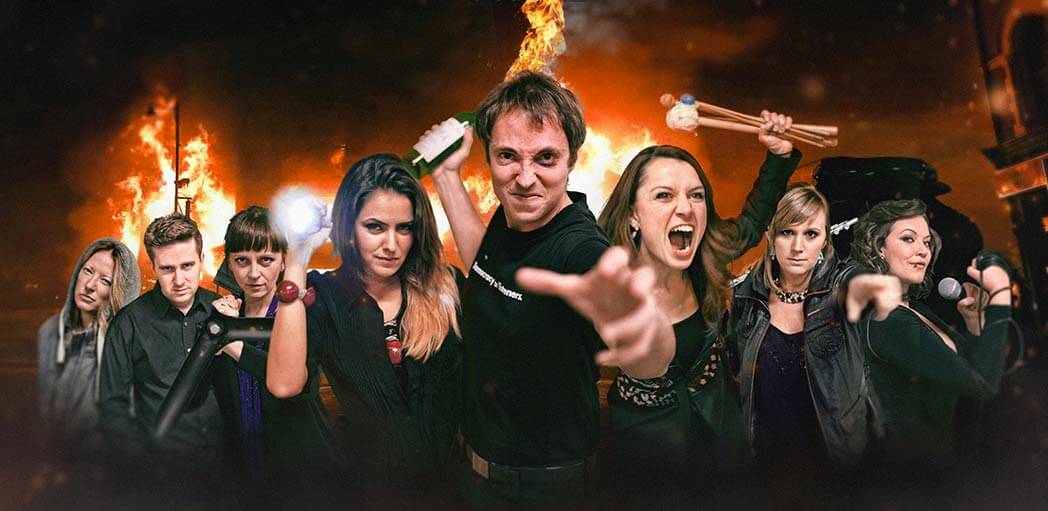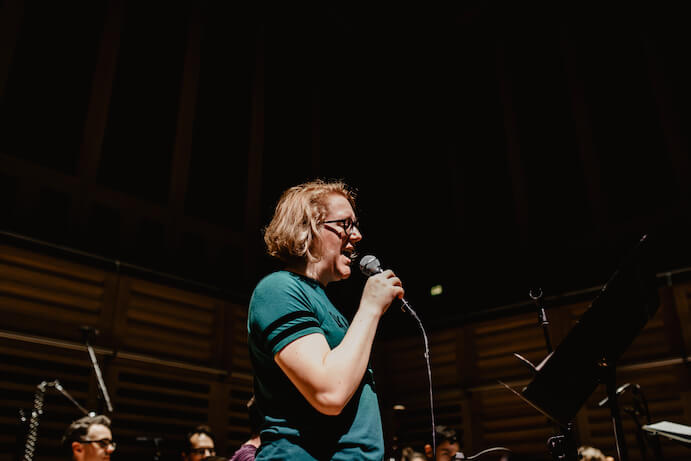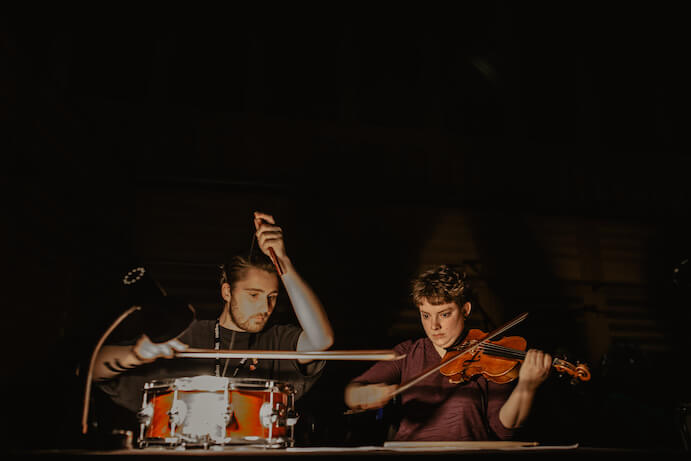Loss, degradation, toxic masculinity: these were the themes of The Riot Ensemble’s ‘Extinction Events’ concert at London’s Kings Place on Valentine’s Day. The dynamic and adventurous ensemble have given over 200 world and UK premieres since 2012 and run a regular call for scores. This was the first concert in the ensemble’s ReNEW series at Kings Place, with future events including Georg Friedrich Haas’ SOLSTICES, a work they commissioned. Recently I heard their astonishing performance of the Haas at the Royal Academy of Music, played in complete darkness.
The Riot Ensemble’s 14 February concert was part of Kings Place’s Nature Unwrapped season, which runs from the obvious (Vivaldi’s Four Seasons) through the work of the season’s artist-in-residence, wildlife sound recordist Chris Watson, to the UK premiere of Liza Lim’s large-scale Extinction Events and Dawn Chorus. We entered the hall to Watson’s recording of a soundscape on the Norfolk coast on the east of England, its crashing waves and screeching birds taking us a world away from the venue. Kings Place’s central London location is very near two major rail termini and ongoing construction work; the only birdlife I regularly see in the area is a few scraggy pigeons on the station forecourt.
One odd connection in the programme was a reference to the now-extinct Kauai O’o bird in the first and last pieces. The ensemble director Aaron Holloway-Nahum’s Like a Memory of Birds (ii) (2019) showcased his acute ear for sonority. Glassy string harmonics merged with muted trumpet, the oboe slithered, perhaps in reference to the Hawaiian bird, and the piano slipped unnervingly in and out of prepared and ‘natural’ timbres. Drumbeats underpinned the short work, bringing it to a conclusion as if in a procession, accompanied by the piano in its highest register and an arresting chordal interjection.

Ctrl for amplified soprano and 13 players (2017) by Laurence Osborn introduced a different theme, toxic masculinity. The ensemble regularly champion Osborn’s work; they are not alone, as he has recently benefited from a number of young composer schemes run by London orchestras. Both his parents are actors, and even if his music doesn’t have words, it has a dynamic, theatrical aspect. Ctrl was given its London premiere by The Riot Ensemble and soprano Sarah Dacey, a member of the innovative trio Juice. Dacey was dressed as a drag king complete with shadowy stubble. Singing with a microphone, her voice was autotuned, transmuted from cartoonish screechiness in the first movement to artificially low distortion in the second.
Ctrl, to Osborn’s own text, examines themes of masculinity and violence in three movements, ‘No Heart’, ‘Body’ and ‘No Head’ and many members of the audience recognised a distorted football chant. Subtle it’s not, though it certainly had a clear message and made a strong impact. The final movement, marked ‘Berceuse’, changed the aggressive mood, as if this were the morning after the night before. The refrain ‘Rock me’, punctuated by Dacey playing a woodblock, suggested the character was reaching out for connection and comfort, and this was the only movement showcasing Dacey’s natural voice. Was this the character’s true, unmediated self? The abruptness of the end suggested that connection had not quite been achieved.

Liza Lim’s 40-minute Extinction Events and Dawn Chorus (2017), commissioned by Klangforum Wien, was the sole work after the interval. This epic five-movement work appears to have a fairly conventional scoring for piano, percussion and one of each of the standard chamber ensemble (omitting only the viola), though all instrumentalists doubled on weird and wonderful percussion instruments and kazoos. The Riot Ensemble staged it with stunning lighting effects, taking us from a red overheated environment to an intimate spotlit duo to a blue-tinged finale, as if the sky were dimly present.
Lim’s theme is environmental degradation and the persistence of the past; she wrote, ‘Like this plastic waste, all time and its traces are with us still, albeit in residual and pulverised states.’ For me, her Australian origins strongly underpinned the work. Bass-dominated, overtone-heavy sonorities circled around as if the ensemble had morphed into a giant didgeridoo, and the piece created a vast sense of space in the medium-sized concert hall. The energetic percussionist Sam Wilson led the way with whirled waldteufels, all players eventually joining him swirling a tiny wooden case on a string. Sarah Saviet, the ensemble’s superb violinist, was first heard in the distance, wandering onto the stage wearing a long veil of what Lim describes as a ‘gigantic sheet of extremely noisy cellophane.’ In one of many strikingly visual and sonic moments in the piece, the cellophane was passed overhead, enveloping all members of the Riot Ensemble. Cellophane might be extremely environmentally unfriendly, but its sound and aesthetic impact were extraordinary.

Extinction Events and Dawn Chorus included some lighter sonic moments–the second movement features a prominent part for whoopee cushions, and the fourth movement was a duo for Saviet and Wilson, with the violinist trying to teach the string drum player to bow his instrument. Three huge whirling windwands captured the air, heralding the final movement ‘Dawn Chorus.’ Most of the ensemble processed off the stage, leaving cello, double bass, and contrabassoon to capture what Lim describes as ‘the uncanny dawn chorus of the fish-life that populates an endangered Australian coral reef.’ Fragile utterances, like wild animals communicating across vast distances, ended this stunning work in suspended time.
‘How with this rage shall beauty hold a plea?’ Lim quotes Shakespeare’s Sonnet no. 65 at the end of her score preface. Less poetically, how can music contribute to contemporary debates on the climate emergency? The Riot Ensemble’s programme made us think, but most of all it made us feel, and their performance of Lim’s Extinction Events and Dawn Chorus will stay with me for a long time.
























